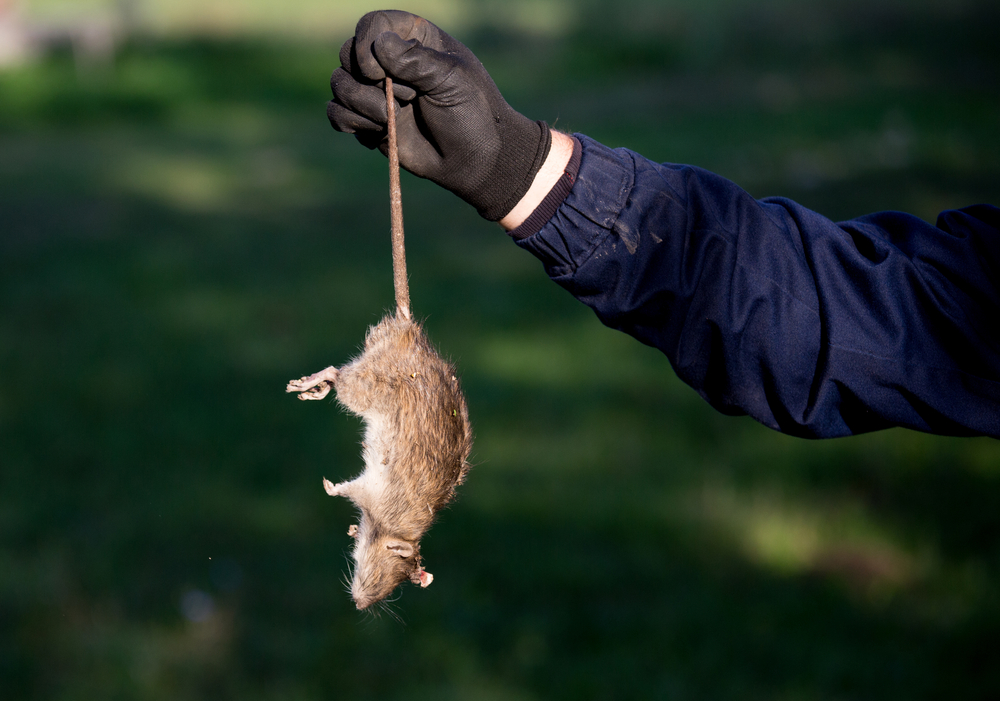Poisons Used to Kill Rodents Have Safer Alternatives

Imagine a hawk soaring above a field, its keen eyes scanning for prey. It spots a rodent, swoops down, and carries it away—nature’s built-in pest control at work. But what if that meal was laced with poison? The hawk, unknowingly, has just sealed its own fate.
This isn’t a rare occurrence. Across cities, suburbs, and farmlands, the very poisons designed to rid homes of rodents are disrupting entire ecosystems. Anticoagulant rodenticides—commonly found in household and commercial rat poisons—don’t just kill rats. They linger in the bodies of their victims, making their way up the food chain, slowly poisoning owls, foxes, bobcats, and even household pets.
The problem doesn’t stop there. These toxic substances seep into soil and waterways, affecting more than just wildlife. They expose humans—especially children—to harmful chemicals, turning what seemed like a simple pest control solution into an environmental and public health hazard.
The Hidden Dangers of Rodenticides
Rodenticides are designed to kill silently, but their reach extends far beyond the rodents they target. These poisons, particularly anticoagulants, cause internal bleeding that leads to a slow and painful death. While this may seem like an effective solution, the problem doesn’t stop with the rodents. Any predator that eats a poisoned rat—whether it’s an owl, a fox, or a beloved pet—ingests those same toxins, setting off a lethal chain reaction. The very wildlife that helps naturally control rodent populations becomes the unintended victim.
This ripple effect is well-documented. Studies have found high concentrations of rodenticides in the bodies of birds of prey, bobcats, and mountain lions, many of which died from internal bleeding after consuming poisoned rodents. Domestic pets aren’t safe either—dogs and cats that scavenge or hunt can be exposed, often with deadly consequences. Even humans are at risk, especially children, who can accidentally ingest bait left in easily accessible areas. Thousands of poisoning cases are reported annually, making it clear that these products are far more hazardous than they appear.
Beyond direct poisoning, rodenticides pollute the environment in ways we rarely consider. Traces of these chemicals seep into the soil, contaminate water sources, and persist in the ecosystem long after their intended use. Urban water testing has revealed rodenticide residues in streams, raising concerns about their impact on human health. With such widespread consequences, it’s clear that the price of convenience is steep. But if these poisons are so harmful, why are they still widely used? The answer often comes down to habit, lack of awareness, and the mistaken belief that there are no better alternatives.
The Ripple Effect: How Rodenticides Harm Ecosystems
 Image source: Pexels
Image source: Pexels
When a single rodent consumes poison, the damage doesn’t end with its death. Rodenticides don’t break down immediately—they linger in the rodent’s system, turning it into a toxic meal for any predator that comes along. Owls, hawks, coyotes, foxes, and bobcats, which play a crucial role in controlling rodent populations naturally, become unintended victims. The result is a disturbing paradox: the very predators that help regulate rodent numbers are being eliminated, allowing rodent populations to rebound and creating an endless cycle of poisoning.
Wildlife studies have confirmed the widespread presence of rodenticides in non-target species. Research in California found that more than 70% of tested mountain lions, bobcats, and birds of prey had detectable levels of rodenticides in their systems. Many of these animals suffered from internal bleeding, a hallmark of anticoagulant poisoning, or developed severe infections due to weakened immune systems. The long-term effects of these toxins disrupt entire food webs, weakening ecosystems and making them more vulnerable to disease and instability.
Even species that don’t consume poisoned rodents directly can be affected. Scavengers, such as vultures and raccoons, ingest rodenticide-laced carcasses, spreading the toxins further. Amphibians and fish are also at risk when rodenticides seep into waterways. These cascading effects illustrate how a seemingly small pest control decision can ripple outward, harming species that have no direct connection to the initial poisoning. When natural rodent predators decline, the balance of ecosystems is thrown off, reinforcing the need for safer, non-toxic alternatives.
Why We Need Safer Alternatives
 Image source: Pexels
Image source: Pexels
The widespread use of rodenticides raises not just environmental concerns but ethical and legal ones as well. In many regions, governments and conservation groups are pushing for restrictions or outright bans on the most dangerous rodenticides due to their devastating impact on wildlife. Some anticoagulants, such as brodifacoum and difethialone, have already been restricted in places like California, where studies have linked them to widespread poisoning of non-target species. Yet, despite growing awareness, these chemicals remain widely available, often sold in stores without clear warnings about their long-term consequences.
Beyond regulation, the ethical dilemma of using slow-acting poisons to control pests cannot be ignored. Rodents poisoned by anticoagulants often suffer for days before dying, experiencing internal bleeding, weakness, and distress. While rodents may be viewed as pests, their suffering—and the unintended harm inflicted on other animals—calls for a more humane approach to pest control. The fact that rodenticides do not provide a permanent solution only compounds the problem. Killing off one population of rodents does little to prevent new ones from moving in, making poison a short-term fix rather than a sustainable strategy.
The good news is that safer, more effective alternatives exist. Integrated Pest Management (IPM) approaches focus on prevention, habitat modification, and biological control rather than relying on toxic chemicals. By sealing entry points, eliminating food sources, and encouraging natural predators like owls and hawks, rodent populations can be managed without causing unnecessary harm. With the right strategies in place, we can break free from the cycle of poisoning and move toward more sustainable, ecologically responsible solutions.
Natural and Safer Solutions for Rodent Control
 Image source: Pexels
Image source: Pexels
Rodent problems don’t have to be solved with poison. Safer, more effective alternatives exist that not only address infestations but also prevent future ones without harming wildlife, pets, or the environment. The key lies in proactive strategies that disrupt the conditions attracting rodents in the first place while leveraging natural solutions to keep populations in check.
The first line of defense is prevention. Sealing entry points, securing trash bins, and eliminating food and water sources make homes and buildings far less appealing to rodents. Simple measures like using metal or heavy-duty plastic containers for food storage, repairing gaps in walls and doors, and keeping outdoor areas free of clutter can significantly reduce the likelihood of an infestation. Additionally, natural deterrents such as peppermint oil, predator urine, and ultrasonic repellents can discourage rodents without introducing harmful chemicals into the environment.
For existing infestations, non-toxic traps and biological control methods offer effective alternatives. Live traps allow for humane removal, while snap traps provide a quick and targeted solution without the risk of secondary poisoning. Encouraging natural predators, such as owls and hawks, by installing nesting boxes can also help maintain rodent populations naturally. Studies have shown that a single barn owl family can consume thousands of rodents in a year, making them a powerful ally in sustainable pest management. By combining these methods, we can replace poison with solutions that work in harmony with nature rather than against it.
A Smarter, Safer Approach to Rodent Control
Rodenticides may seem like a convenient solution, but their impact extends far beyond the pests they target. These poisons disrupt ecosystems, endanger wildlife, put pets and children at risk, and introduce toxic chemicals into our environment. The irony is that they don’t even provide a long-term solution—rodent populations quickly rebound, leading to a never-ending cycle of poisoning and repopulation.
The good news is that we don’t have to rely on harmful chemicals to manage rodent problems. Simple preventative measures, humane traps, and the support of natural predators offer effective, sustainable alternatives. By sealing entry points, removing attractants, and encouraging ecological balance through species like owls and hawks, we can reduce rodent populations without harming the broader environment.
Every choice matters. Whether it’s removing poison from our homes, advocating for wildlife-friendly policies, or educating others about the dangers of rodenticides, we each have a role to play. The solution to rodent control isn’t more poison—it’s smarter, more sustainable strategies that protect both people and the planet.
Featured Image Source: Shutterstock
Loading...






